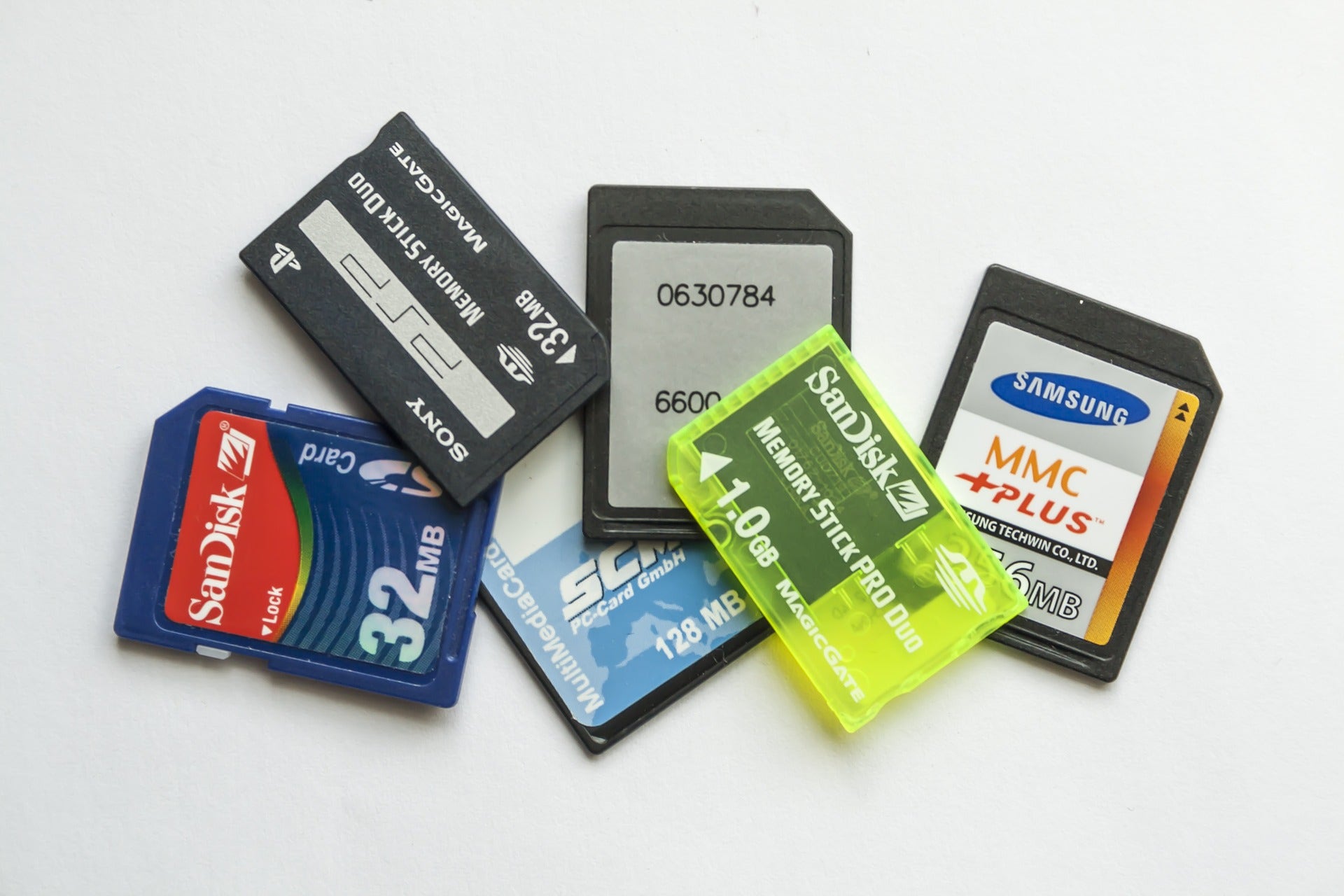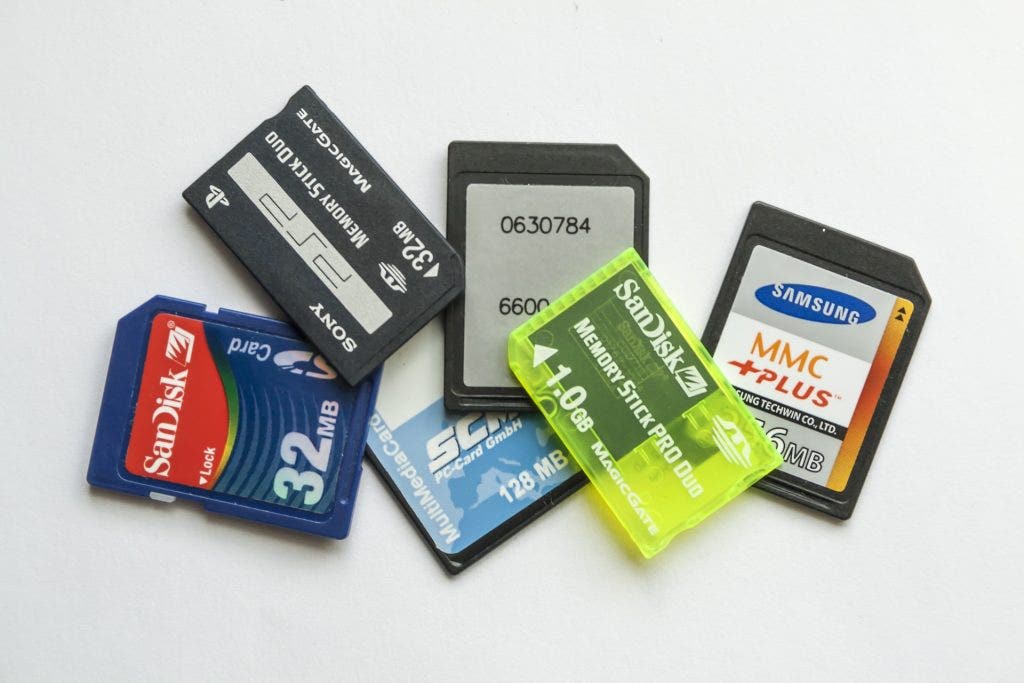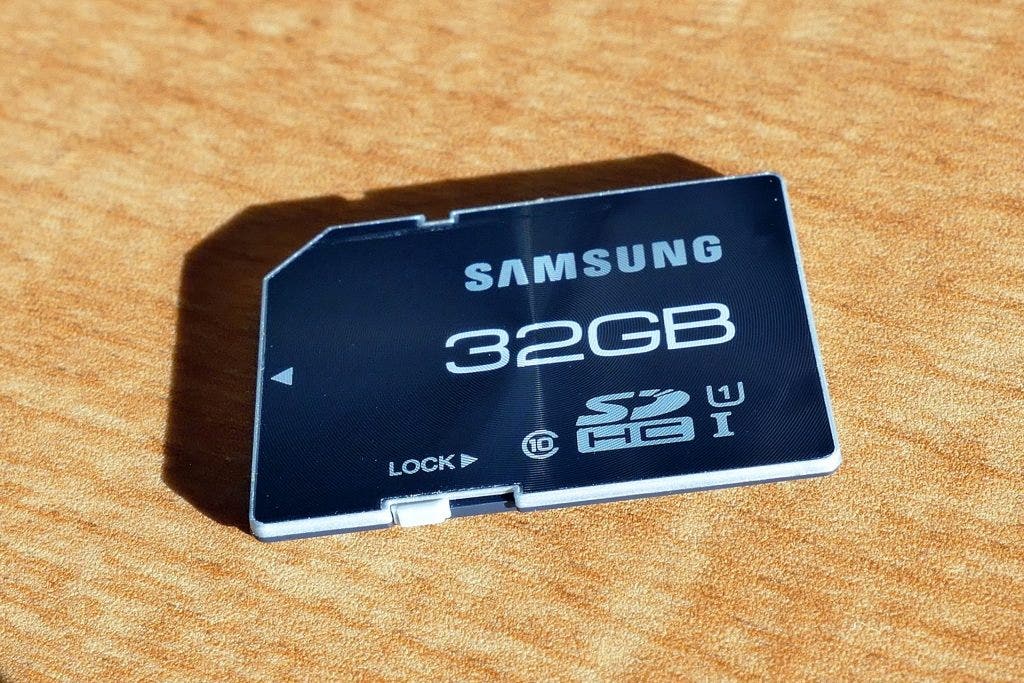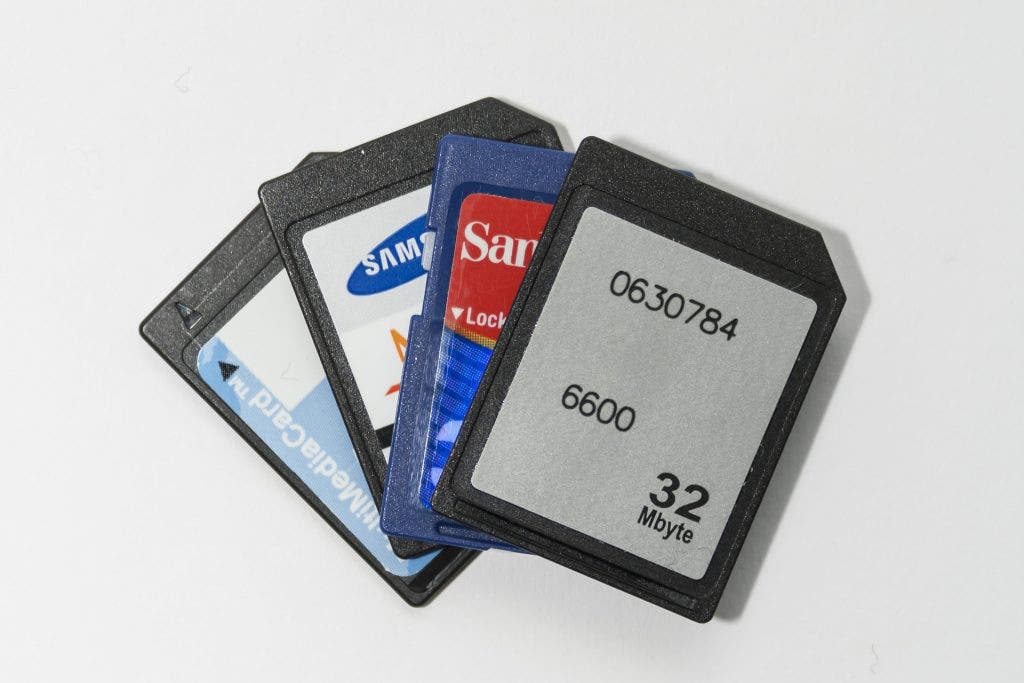
These days, searching for the right memory card (SD card) for your camera can be almost as tough as getting the camera itself.
The SD market is hugely competitive and complicated, so if you’re on the hunt for a memory card, you should pay close attention to a few of the key criteria.

Firstly, What Does SD Stand For?
SD stands for Secure Digital, a non-volatile memory card that was introduced in 1999 by SanDisk, Toshiba and Panasonic. These three companies formed SD-3C, a company that licenses and enforces intellectual property rights associated with SD memory cards.
SD is now the industry standard for memory cards in cameras and portable devices.
Sizes of Memory Cards
SD cards are available in three main sizes:
- Standard SD cards are the largest of the three SD size ranges. Many cameras today still use these types of memory card.
- Mini SD cards were the smaller version of standard SD cards…that is, until microSD cards came in and stole their thunder. Nowadays, they aren’t prevalent, especially in the camera world.
- Micro SD cards are the smallest size of SD card and are the norm for smartphones, tablets and other handheld devices.
Types of Memory Cards
Even within the world of SD, there are a multitude of memory card types.

SD (Secure Digital) Memory Cards
SD cards are the most common memory card, mostly because they function with so many cameras and devices. They can only store up to 2GB.
SDHC (Secure Digital High Capacity) Memory Cards
This is essentially a more modern, higher capacity SD card. Unlike their predecessors, the SDHC can store up to 32GB in the same shape and size. Be warned though that older camera models may not recognise these.

SDXC (Secure Digital Xtended Capacity) Memory Cards
Announced in 2009, the SDXC dramatically increasing the SD card’s capacity to 2TB. However, it pays to double check that your camera can read the SDXC format and that your computer can read the exFAT file system.
CompactFlash (CF) Memory Cards
CompactFlash cards offer a heap of storage and fast processing times, which make them ideal for high-powered video cameras and advanced DSLRs.
Micro SD cards
We’ve already written about micro SD cards being the smallest in the SD family. For this reason, a few compact cameras take advantage of their compact size and opt to use them as their SD card of choice.
xD Picture Memory Cards
Of course, SanDisk, Toshiba and Panasonic aren’t the only ones producing memory cards. This xD format is made by Fujifilm. Note that many new Fujifilm cameras are compatible with SD cards.
Memory Stick Duo Memory Cards
The Sony equivalent of SD cards. Like xD format memory cards, most Sony cameras are also compatible with SD cards.
Speed of Memory Cards

One of the most important considerations about memory cards in cameras is their speed. For example, if you take a lot of photos in rapid succession or a lot of high-definition videos, you won’t want your SD card slowing down your output.
Speed is broken into two types: read speed and write speed. The read speed refers to how quickly files can be retrieved from the card, while write speed is how quickly files can be written onto the memory card.
In terms of photography, a photographer who uses burst modes or takes HD videos regularly will be after a fast writing speed, whereas a wedding photographer who takes 1,000 photos over the night might prefer a fast reading speed that can transfer the files onto their computer at a faster rate.
Handily, memory card speeds are indicated on the card itself, in the form of a number with a crescent border around it. There are four main speed classes: 2, 4, 6 & 10. 2 is the slowest, able to capture SD video. 10 is the fastest, suitable for full HD recording.
There are also two Ultra High Speed (UHS) speed classes (1 & 3), which are more expensive and designed for professional use. Always check your device first to see if it is UHS compatible.
For most photographers and videographers, a class 4 or 6 will be sufficient. However, if you want luxury or you like shooting a fair amount of HD video, you may want to consider a class 10 memory card.
Browse the Camera House range of memory cards to see the diverse nature of the industry. You’ll find different speeds, capacities, brands and types. As stated above, it’s important to check what your device supports
